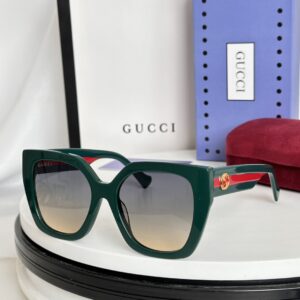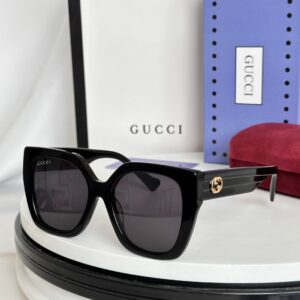Understanding Common Eye Problems Linked to Eyewear
Wearing the right eyewear is crucial in promoting optimal eye health, while poor choices can lead to a variety of eye problems. One of the most commonly reported issues is eye strain, which can manifest as discomfort, fatigue, and difficulty focusing. This is often exacerbated when individuals wear glasses that do not match their vision needs or when the lenses are of subpar quality. Headaches, often triggered by prolonged eye strain, can occur when the eyes are forced to work harder than they should. Individuals should pay attention to the fitting of their eyewear; poorly fitting glasses can cause additional discomfort and exacerbate these symptoms.
Blurred vision is another common problem associated with incorrect eyewear. When the prescription is outdated or incorrect, or when low-quality lenses are used, clarity is compromised. This not only affects day-to-day activities but can also lead to a significant decline in quality of life. Long-term use of poor eyewear can increase the risk of developing serious conditions, such as cataracts or glaucoma. These eye conditions often develop without noticeable symptoms in their early stages, making regular eye examinations essential for early detection.
Individuals should remain vigilant for signs of eye strain, such as persistent discomfort, blurred vision, or changes in visual clarity. If these symptoms occur, it is advisable to seek professional guidance from an optometrist or ophthalmologist. They are equipped to assess visual health and recommend appropriate eyewear solutions tailored to individual needs. Ensuring that eyewear is suited to one’s vision requirements, made from high-quality materials, and properly fitted can prevent the onset of several eye health problems. Making informed choices regarding eyewear not only protects vision but also enhances overall well-being.
Safety Standards for Replica Sunglasses
The eyewear industry is governed by a set of safety standards that are crucial for ensuring both the eye health of consumers and the overall functionality of sunglasses. Replica sunglasses, often more affordable but frequently inferior in quality, can pose significant risks if they do not adhere to these essential safety regulations. Primarily, sunglasses need to provide adequate UV protection to shield the eyes from harmful ultraviolet rays that can lead to serious conditions, such as cataracts or macular degeneration. The American National Standards Institute (ANSI) and the International Organization for Standardization (ISO) have established guidelines that specify the necessary level of UV protection, generally indicating that sunglasses should block 99% to 100% of UVA and UVB rays.
In addition to UV protection, optical clarity is another critical factor. Quality standards dictate that sunglasses must minimize distortion and ensure that vision remains clear while wearing them. Poorly made replicas can feature substandard lenses that create visual distortions, leading to headaches and fatigue as the eyes strain to focus. Furthermore, the frame quality is also essential; frames that do not fit properly can cause discomfort and lead to misalignment, which can also affect the optical effectiveness of the lenses.
Consumers seeking replica sunglasses should be aware that not all models meet these safety guidelines, which can have detrimental effects on eye health. To avoid purchasing non-compliant eyewear, individuals should look for labels or markings indicating compliance with ANSI or ISO standards. Additionally, reliable retailers often provide information regarding the product’s safety certifications. Investing time in verifying the standards can help individuals enjoy their fashionable choices without compromising their eye safety.
How Replica Sunglasses Fit into the Fashion Industry
Replica sunglasses have found a significant niche within the fashion industry, offering consumers access to high-end designs at a fraction of the cost. These imitations not only resonate with the aesthetic preferences of many individuals but also align with the current trends favoring fast fashion. The affordable price tag associated with replica sunglasses makes them an attractive option for style-conscious consumers who may not want to invest in genuine designer eyewear.
The appeal of these replicas often lies in their ability to closely resemble popular and coveted styles, enabling individuals to emulate trends without the associated financial burden. Many consumers prioritize style over substance, opting for replicas as a means to showcase fashionable looks, even when the quality may not always match the original. This behavior highlights a growing trend in consumer choices, where the desire for trendy pieces often outweighs concerns about durability or brand authenticity.
However, the increasing popularity of replica sunglasses raises several ethical implications. By purchasing and wearing these replicas, consumers may inadvertently contribute to the undermining of brand reputation for established designers, impacting their market standing and potential revenues. This dynamic creates a complex relationship between affordability and quality, where consumers face a difficult decision between selecting replicas and investing in authentic products that uphold craftsmanship and brand integrity.
Consequently, the impact of replica sunglasses extends beyond mere aesthetics; it invites a broader discussion regarding consumer values and priorities within the fashion industry. As individuals navigate their choices, they may question the balance between enjoying fashionable accessories and supporting ethical practices by authentic brands. This conversation remains central to the ongoing evolution of fashion and the choices consumers make as they balance desire, affordability, and ethical consideration.
Making Informed Eyewear Choices
Choosing the right eyewear involves careful consideration of various factors, which can significantly affect both eye health and personal style. First and foremost, when selecting sunglasses, it is crucial to opt for those that provide proper UV protection. Look for lenses that block 100% of UVA and UVB rays, as this is paramount in safeguarding your eyes from potential damage caused by prolonged exposure to sunlight.
Understanding lens options is another essential aspect of informed eyewear choices. There are various types of lenses available, each designed to serve different purposes. Polarized lenses, for example, reduce glare, making them an excellent choice for outdoor activities. Additionally, photochromic lenses that automatically adjust to changing light conditions offer convenience for those who frequently transition between indoor and outdoor environments. Choosing the right lens can significantly enhance comfort and visual clarity.
Frame selection also plays a vital role in achieving both style and functionality. Consider the shape of your face when choosing eyewear frames; different frame shapes can complement or contrast with your facial features. For instance, round frames may suit square faces, while angular frames can be more flattering for round-shaped faces. It is advisable to try on various styles to determine which frames best balance your aesthetics and comfort.
Moreover, regular eye exams are essential for maintaining eye health and ensuring your eyewear prescription is up-to-date. Stay vigilant for red flags regarding eyewear quality; if frames feel loose, lenses are scratched, or discomfort occurs, it may be time to reassess your options. By prioritizing both functionality and fashion, you can make educated eyewear choices that support your overall eye health while enhancing your personal style.




